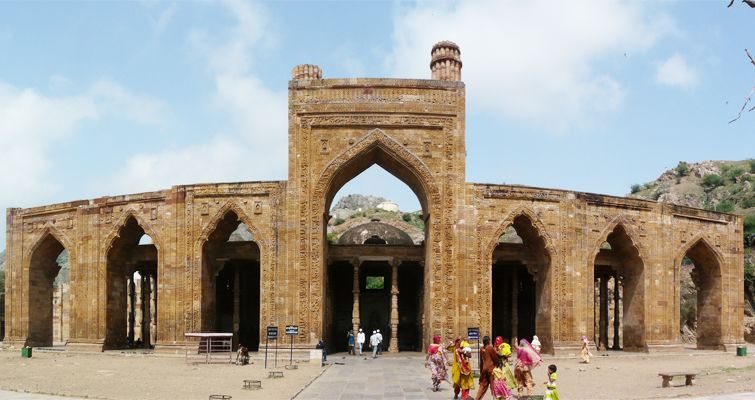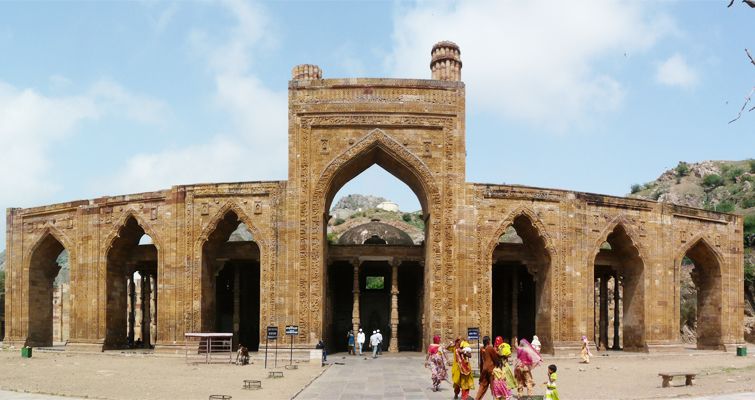

"Adhai Din Ka Jhonpra" literally means "shed of two-and-a-half days". Alternative transliterations and names include Arhai Din ka Jhompra or Dhai Din ki Masjid. A legend states that a part of the mosque was built in two-and-a-half days. Some Sufis claim that the name signifies a human's temporary life on the earth. According to the ASI, the name probably comes from a two-and-a-half-day-long fair that used to be held at the site. Indian academic Har Bilas Sarda points out that the name "Adhai-Din-ka-Jhonpra" is not mentioned in any historical source. Before the 18th century, the mosque was simply known as a "Masjid" ("mosque"), since it had been the only mosque in Ajmer for centuries. It came to be known as a jhonpra ("shed" or "hut") when fakirs started gathering here to celebrate urs (death anniversary fair) of their leader Panjaba Shah. This happened during the Maratha era, in the second half of the 18th century. The urs lasted for two-and-a-half days, resulting in the modern name of the mosque. Alexander Cunningham described the building as the "Great Mosque of Ajmer". The mosque is among the earliest examples of Indo-Islamic architecture. It was designed by Abu Bakr of Herat, an architect who accompanied Muhammad Ghori. The mosque was built almost entirely by Hindu masons, under the supervision of Afghan managers. The mosque is much larger than the Quwwat-ul-Islam mosque of Delhi. The exterior of the building is square-shaped, with each side measuring 259 feet. There are two entrances, one at the south and another at the east. The prayer area (the actual mosque) is located in the west, while the north side faces a hill rock. The actual mosque building on the western side has 10 domes and 124 pillars; there are 92 pillars on the eastern side; and 64 pillars on each of the remaining sides. Thus, there are 344 pillars in the entire building. Out of these, only 70 pillars remain standing now. It has a square dimension measuring 80 m (260 ft). The tall and slender pillars are not overcrowded and the ones in the courtyard are symmetrically placed. The sanctuary measures 43 m (141 ft) by 12 m (39 ft). The mihrab is built with white marbles. It is believed that Iltumish added the seven arch screen by 1230, is considered to be an architecturally most notable feature of the mosque. The large central arch is accompanied by two small fluted minarets.